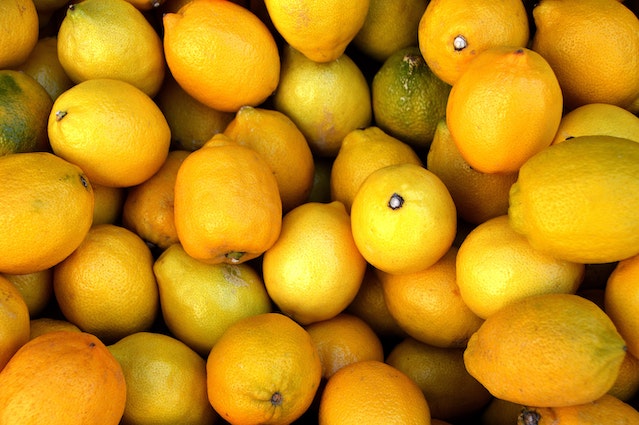Citrus Market Outlook: What Can We Expect Going into 2023?
The citrus market has experienced numerous changes in recent years, but what can we expect in 2023? Read on to learn more.

Citrus fruits are an important source of nutrition and a popular choice for consumers. However, the citrus market has seen a number of changes in recent years. Despite challenges, though, the outlook for this year looks positive.
Citrus market prices have been impacted by a number of factors, including climatic conditions, disease outbreaks, and changing consumer preferences.
Here’s a look at what we can expect going into 2023, as well as how Silo can help you adapt to market changes.
An outlook on the citrus market
Here’s this year’s outlook on the market for citrus fruits.
1. A comeback for Chilean citrus
The United States is the primary destination for Chilean mandarin exports, accounting for 95% of all shipments in 2021.
According to the USDA, Chile's citrus exports are expected to make a significant recovery in 2023 after the crop's premature termination due to frost in 2022. Between November 2021 and October 2022, citrus imports from Chile saw a value of $328.5 million, which was almost 20% less than the value of citrus market imports during the same period in the previous year.
Chilean lemon production could return to normal levels by 2023, at which point, it should reach 200,000 metric tons. It’s anticipated that Chile will have 21,000 acres of lemon groves in 2023, which is an increase of 5.7% from 2022 and more than 40% from 2016.
The lemon citrus marketing year typically begins in April, with the months of June through September being when the vast majority of lemons are sent overseas.
2. Optimism for the growing season in California and Arizona
Citrus market growers in California and Arizona are optimistic about their industry's prospects for the current growing season, forecasting a huge number of fruit over the winter months.
The USDA indicates that citrus production during the previous season was around 19% lower than normal, but producers in California and Arizona remain optimistic. After difficult seasons from 2021 to 2022, it’s projected that citrus production in California and Arizona will bounce back.
The high yield of California-grown navel oranges in November, along with incredibly large pummelo and California mandarins, is why producers are looking at the new season with hope. The arrival of quality cara cara oranges, blood oranges, and minneola tangelos in the following months is expected to increase the sale of citrus fruits as well.
Grower-shippers believe that if they can effectively market the benefits of citrus fruits to customers, the amount of purchases will increase over the season.
3. Challenges in Florida
Last year, the citrus market sector in Florida had its lowest output since the beginning of World War II, despite the fact that the state had poured millions of dollars into marketing and research initiatives.
Hurricane Ian (which hit Florida in late September) and Hurricane Nicole (which hit Florida in early November) both caused significant damage to the state's citrus crops, which was reflected in the USDA’s crop production report for December.
The United States Department of Agriculture (USDA) reduced its projection for the “2022-2023 Florida all-orange crop” by nearly 29% from its October projection.
The current forecast for grapefruit production in Florida is down 46% from the previous season, and 10% from the forecast made in October.
4. Strong prospects in Texas
Following two years of underwhelming production, the citrus industry in Texas is showing signs of improvement this winter. After two years of being unable to bring in substantial citrus crops due to adverse weather conditions, growers are quite optimistic about the 2022-2023 growing seasons.
Growers in Texas have reaped benefits as a result of Hurricane Ian in Florida and the megadrought that has affected citrus harvests in Arizona and California. As a result of the shortage in supply, buyers have turned their focus once again to the harvest in Texas in an effort to fill space on their shelves.
Grapefruit-growing in California was completed ahead of schedule, which, along with the storm that hit Florida, drove up citrus market prices.
Growers will continue to look for solutions to the problem of Huanglongbing, commonly called citrus greening or HLB, which is a kind of pest that causes citrus trees to turn green.
Despite this, citrus producers in Texas have not reported a decrease in output as a direct result of the disease thus far this season. Instead, growers in this region have gained a great deal of knowledge from their peers in Florida and quickly started ACP treatments and improvements to tree health.
React more effectively to market conditions with Silo
Despite a few hiccups along the way, the citrus industry seems to have a bright future ahead going into 2023. The use of newly developed greening treatments, as well as the identification of trees that display natural resistance or tolerance to the infection, are both in the works and will soon be put into action. Although the hurricane is undoubtedly a setback, the market remains optimistic.
It’s important to understand that when the processes of a business are aligned for improved outcomes, the repercussions of market fluctuations have a comparatively smaller impact. The adoption of ERP solutions can be incredibly helpful in this regard.
Silo is an ERP software solution that offers a number of advantages, some of which include improved decision-making, higher levels of efficiency, and enhanced data accuracy.
Book a demo with Silo today!
Want to book a demo with us?
Add your info and we’ll get one scheduled with you.